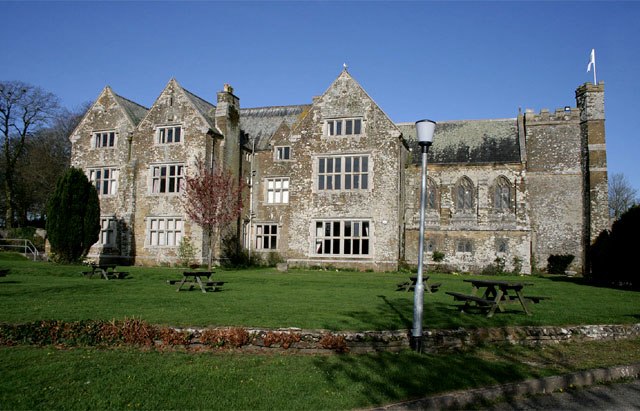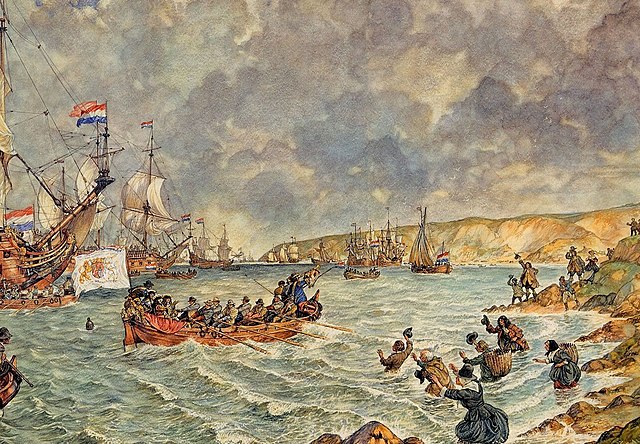Major General Charles Trelawny, also spelt 'Trelawney', was an English soldier from Cornwall who played a prominent part in the 1688 Glorious Revolution, and was a Member of Parliament for various seats between 1685 and 1713.
Family home, Trelawne Manor
Tangier circa 1670; Trelawney served in the garrison from 1680 to 1684
Charles' elder brother, Sir Jonathan Trelawny, one of the Seven Bishops acquitted on 30 June 1688
St Nonna, near Pelynt, where Trelawney was buried in 1731
The Glorious Revolution is the sequence of events that led to the deposition of James II and VII in November 1688. He was replaced by his daughter Mary II and her Dutch husband, William III of Orange, who was also his nephew. The two ruled as joint monarchs of England, Scotland, and Ireland until Mary's death in 1694. The Revolution itself was relatively bloodless, but pro-Stuart revolts between 1689 and 1746 caused significant casualties, while the political movement known as Jacobitism persisted into the late 18th century. William's invasion was the last successful invasion of England.
The Prince of Orange landing at Torbay as depicted in an illustration by Jan Hoynck van Papendrecht
James II & VII, King of England, Scotland and Ireland, by Godfrey Kneller, National Portrait Gallery, London
James's attempts to allow tolerance for English Catholics coincided with the October 1685 Edict of Fontainebleau revoking it for Huguenots.
The Seven Bishops prosecuted for seditious libel in 1688








